Despite its infuriating control issues, awful stealth missions, interminable boss fights and half-baked sidequests, I cannot discount Gravity Rush 2‘s mammoth ambition and abundance of otherworldly charm. If a game must be a mess, at least let it be this exuberant a mess.
Gravity Rush 2 is an open-world superhero game that tells the tale of Kat, a mysterious woman who fell from the sky at the start of 2012’s Gravity Rush. Kat is a “shifter,” a powerful being with the ability to manipulate gravity.
With the press of a button, you can reorient her personal gravitational pull, which means she can fall up, down, or sideways. She can use her personal gravity field to hurl debris at her enemies, stand on walls and launch a flying side-kick from about a hundred yards. She’s also a cheery dope with a taste for junk food and a near pathological eagerness to please.
At the start of the first game, Kat found herself in the floating city of Hekseville with no memory of who she was or how she got there. By that game’s conclusion, Kat had risen to prominence as Hekseville’s superhero protector The Gravity Queen, though she only recovered fragments of her memory.
In the time between then and now, Kat has been working with her best friend Raven, a fellow shifter and former rival whom Kat fought and eventually befriended in the first game. Kat and Raven keep the peace in Hekseville and fight off the Nevi, a race of bulbous beasties that appear during the mysterious gravity storms that plague the city.
During the events of the entertaining but baffling two-part animated prologue that Sony released ahead of the new game, Kat and Raven discovered the threads of a nefarious new plot before being swept into a gravity vortex along with their hapless buddy Syd.
Gravity Rush 2 picks up slightly after that, with Kat separated from Raven as well as from her magical cat Dusty, from whom she derives her gravity powers. She’s just a normal girl now, far from home. She’s working on a floating mining colony with Syd and hoping to find her way back to her friends and hometown.
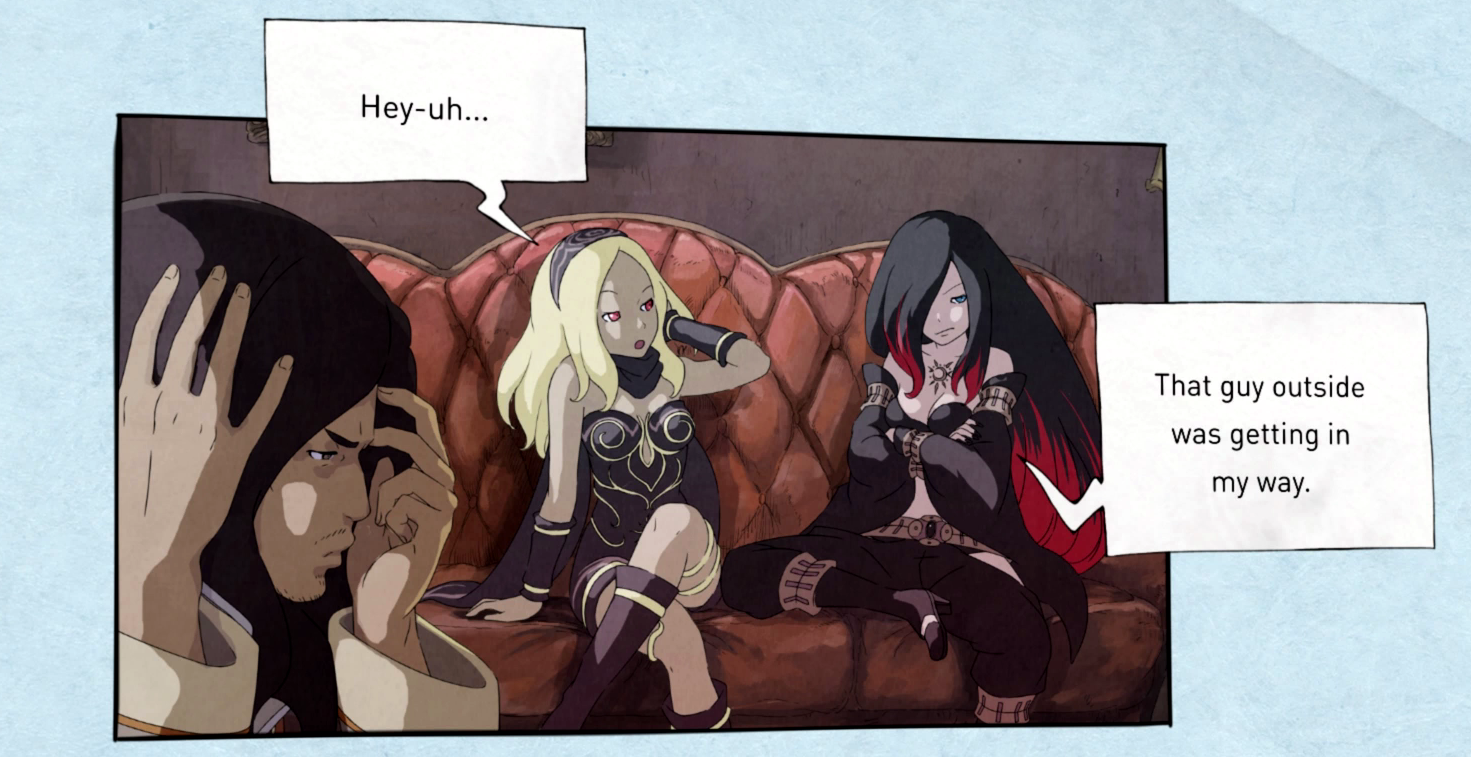
As in the first game, characters speak a made-up simlish language and cutscenes usually play out in well-illustrated comic panels.
From there, things unfold into an epic of anime proportions. Over the course of three sprawling acts, Gravity Rush 2 serves up dimensional rifts, nefarious councils, ancient lost cities, robot mind control, relativistic time shenanigans, meddling gods, armies of battle mecha, corrupt politicians, evil superheroes, flying cyborg soldiers, trans-dimensional apocalypse demons and something called “Panther Mode.”
The first act mostly functions as a standalone story, but from the second act onward the narrative relies heavily on characters and concepts introduced in the first Gravity Rush. Woe to those who wish to understand this sequel without at least putting in a solid half hour on the first game’s wiki.
The second act feels like an entirely separate story from the first act, complete with a new map, a new villain, new allies, a new oppressive government, and a new scrappy rebellion. As I reached the conclusion of the semi-hidden, unexpectedly cathartic third act, I couldn’t help but laugh at how grand and far-reaching it had all become. Gravity Rush 2 isn’t one story — it’s three.
There is an absurd amount of stuff to do in this game, and much of it subtly fleshes out the world and the characters who inhabit it. Many of the later narrative beats carry more weight if you’ve gotten to know less consequential characters by doing side missions for them.
There’s the young boy whose grandfather left behind a lovely message before he died. There’s the jerky father and son who constantly take advantage of Kat’s kindness. There’s Kat’s timid friend Cecie and her lackadaisical companion Syd. There’s the murmuring movie director, the cocky ace miner, the overzealous police inspector, and so on.
The best relationship in the game is between Kat and Raven. Raven is the smouldering Liz Taylor to Kat’s bubbly Marilyn Monroe, or perhaps the Faith to Kat’s Buffy. I hadn’t been expecting Raven to play as big a role in Gravity Rush 2 as she does, and was pleasantly surprised to find her fighting alongside Kat in all but a few of the game’s missions and climactic showdowns.
Raven more than holds her own in a fight, and each boss battle ends with a unique finisher animation as she and Kat go full Sailor Moon. I never tired of watching them lay waste to their enemies.
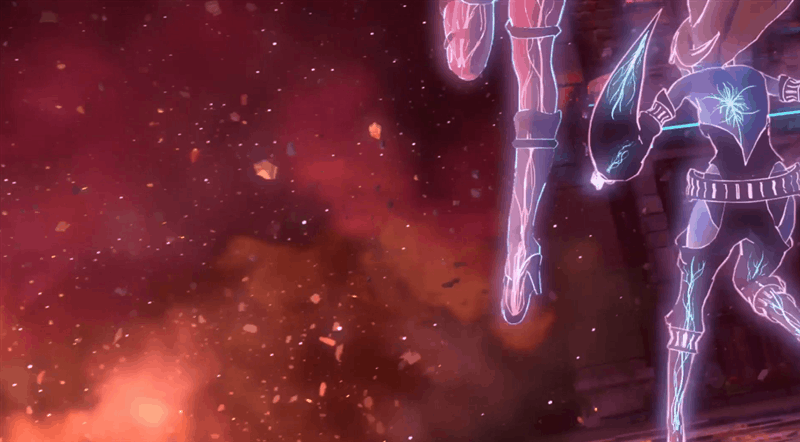
Kraven 4 lyfe
I’ve long been enamoured of Gravity Rush‘s peculiar fall-flying method of traversal, and the sequel elaborates on that strong central idea with relish. If you missed the first game, here’s how it works: Kat will start out running around on the city streets, feet anchored to the ground like a normal person. With a tap of the right shoulder button, she’ll become suspended in midair, free from gravity’s pull. Reorient the camera and press the shoulder button again, and that direction becomes down.
She’ll begin falling that way, which of course could mean she’s falling directly upward. She’ll stick to any surface you land on, her hair and scarves hanging toward “true down” in order to help the player stay oriented. All this gravity skewing takes some getting used to, but once you get your head around it you’ll be tumbling and wall-running like a born shifter.
Over the course of the game, Kat unlocks two new “styles” in addition to her standard mode. There’s Lunar Style, which makes her lighter, and Jupiter Style, which makes her heavier. Both styles come with their own ranged and special attacks, but their more pervasive effect is that they change Kat’s weight and therefore the velocity at which she falls. Lunar Style in particular is a wonderful addition, giving Kat the ability to catapult upward with charged leaps that would make the most powered-up Crackdown agent jealous.
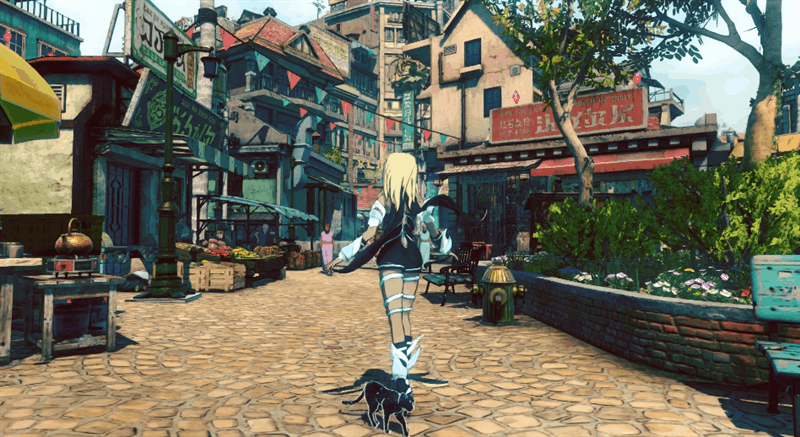
I’ve played more than two dozen hours of Gravity Rush 2 and have yet to tire of leaping around its gorgeous floating cities in search of power-up gems. It helps that this is an aesthetically sumptuous, stunning-looking game. The stylised, hand-drawn art style richly fills the screen, enhanced by some beautiful atmospheric and lighting effects. The commercial district of Lei Colmonsna is eye-popping, but darker and more mysterious worlds are often just as striking.
Series composer Kōhei Tanaka has written an impressive amount of new music while bringing back some lightly re-arranged classics from the first game. He once again defines Gravity Rush‘s strong musical identity — again the strings dip and dive, again the rowdy brass section calls us arms, again the guitar solos urge us onward. (And so much saxophone this time around! Be still, my heart.)
Even the clothes worn by passersby make an impression, with different popular styles turning up in different towns and regions.
Gravity Rush 2‘s aesthetic beauty is so bounteous, it’s a shame that it can be so annoying to actually play. Things begin on a sour note as a powered-down Kat is forced through a series of plodding missions that more or less amount to walking around and talking to people. Before long she’s thrown into a maddening melee contest that handily demonstrates how shallow Gravity Rush 2‘s single-button combat is when stripped of high-flying gravitational powers. As I slogged through the first hour I wondered if things might improve once I arrived at the first proper city.
Bad news: They didn’t.
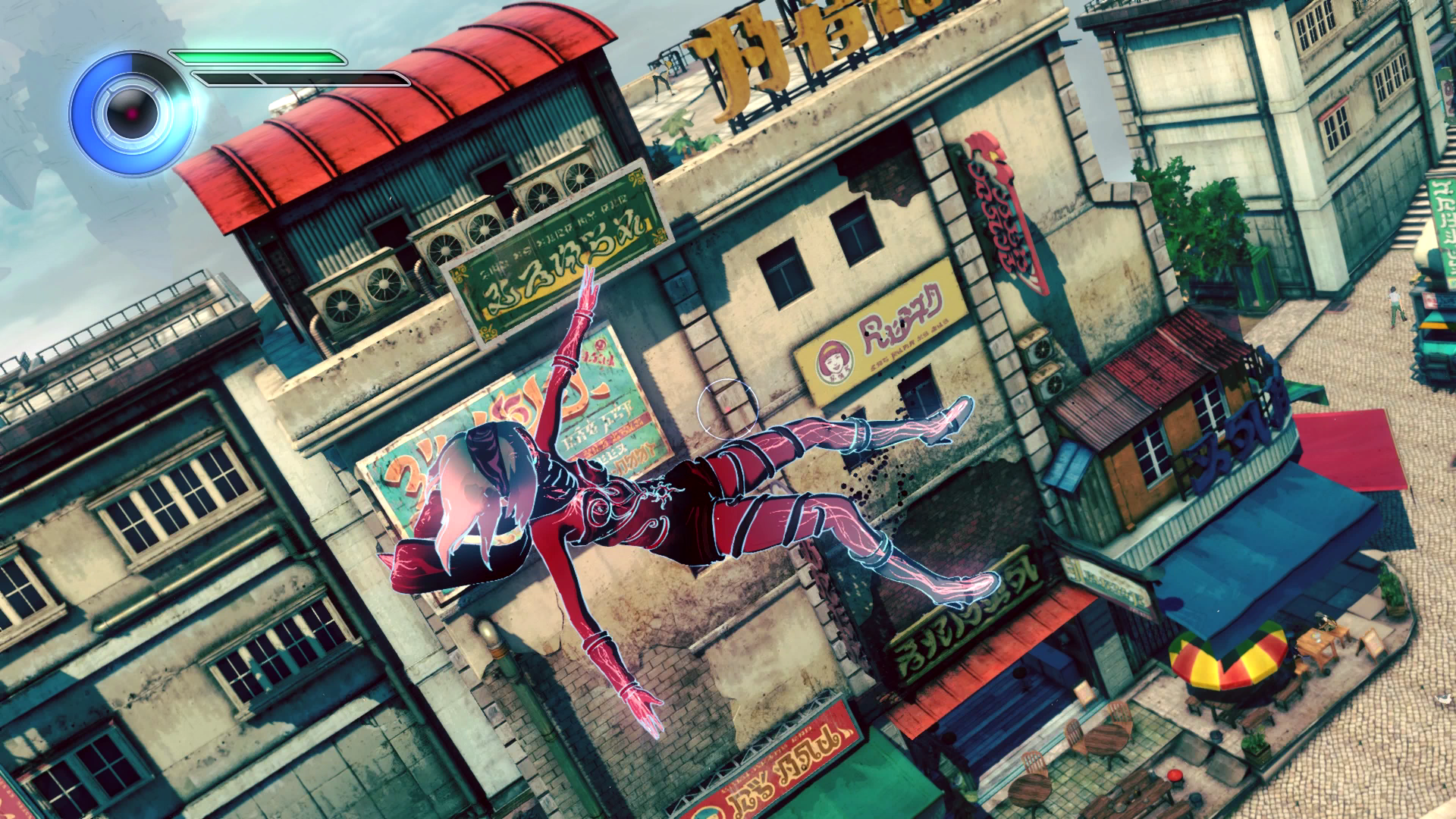
I struggled to enjoy myself throughout each of Gravity Rush 2‘s 27 story missions, and am hard-pressed to think of a single one that was fun from start to finish. Any time I began to get into something resembling a flow, an abrupt difficulty spike or awkward forced objective would bring me crashing down.
A basic battle between Kat and some monsters is plenty enjoyable, mostly because it feels manageable. You can track your enemies and keep moving, singling them out and taking them down one by one. Ratchet things up a notch, however, and you have to multiply an overwhelming amount of visual noise by the constantly spinning and reorienting camera. It becomes difficult to keep track of everything, and the game quickly descends into chaos.
A late-game battle might task me with repeatedly hitting weak spots on a massive boss while dodging smaller minions. It sounds straightforward, but the busier the battlefield is, the harder it is to read. A given enemy might launch a ranged attack, blast off an area-of-effect attack, or float toward me to try to hit me directly.
As I flip and fall around, the camera will often go wild or even get stuck behind walls or other objects, making it difficult even to remember where the building-sized boss is, let alone any of the dozen smaller threats around it.
On top of all that, many bosses will emit blasts of wind or conjure sucking vortexes that will rob Kat of control and send her careening away from whatever she was trying to do. I found it difficult to quickly reposition Kat on the battlefield, even after getting my head around using the touchpad to switch styles and move faster. The game allows you to try several alternate control methods, but none are satisfactory.
Oh, the frustration of slowly floating in an unclear direction, desperately trying to get back to solid ground while being repeatedly hit with ranged attacks that you couldn’t see coming. It’s possible that a more skilled player would have less of a hard time keeping their head amid the chaos, but I don’t think of myself as particularly unskilled at Gravity Rush.
I’ve played dozens of hours of the first game and love noisy, chaotic action games like Bayonetta and Devil May Cry. To my eye, there’s something fundamentally off about the way Gravity Rush 2‘s combat encounters scale up.
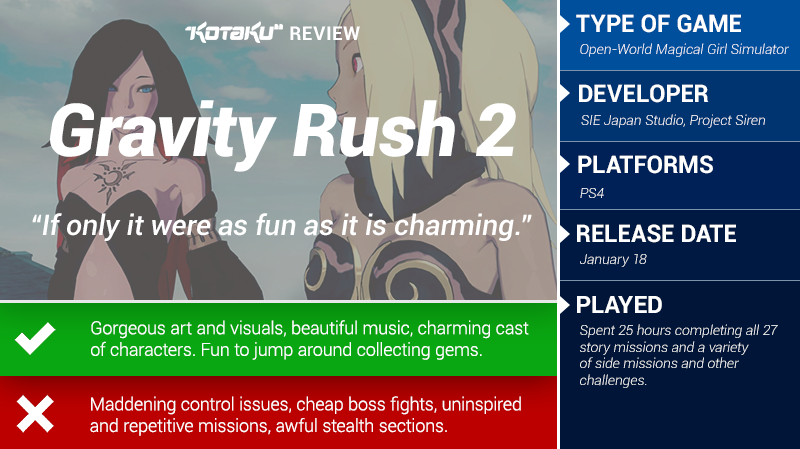
The game has plenty of clearer-cut design problems, as well. Missions are almost all assembled according to the same insipid template, which I’ve come to think of as “OK, now do it again.” Few story missions and sidequests are content with letting you do something once.
Here, use this water to douse that fire. OK, now do it again. OK, now do it again. Here, carry this guy to that building and then fight off some monsters. OK, now do it again. OK, now do it again, with nary a surprise from start to finish.
The side missions are shallow but can be cute. Dress up as a character called “Battle Nurse” and perform increasingly dangerous stunts for a movie shoot. Track down some students who are performing a dark ritual and join them in completing it. Hurry from store to store trying to find a hot new toy before it sells out. One story mission has you hold another character’s place in line at a food stand.
You just stand there, in line, until you get to the front and order. While these sorts of undertakings are enjoyably goofy and add a veneer of variety to the game, they’re ultimately unsatisfying. Half the time you’re just going from place to place and pressing the square button.
And then there are the stealth missions. My god, the stealth missions. This is a game built for flying around and kicking giant monsters in the eyeball, not lurking behind cover and evading guard patrols. Why on Earth director Keiichiro Toyama and his team decided to pepper their game with not one but a whole series of mandatory, insta-fail stealth missions is beyond me. Fly too high in the air and you’ll be spotted and fail. Walk around the wrong corner and you’ll be spotted and fail.
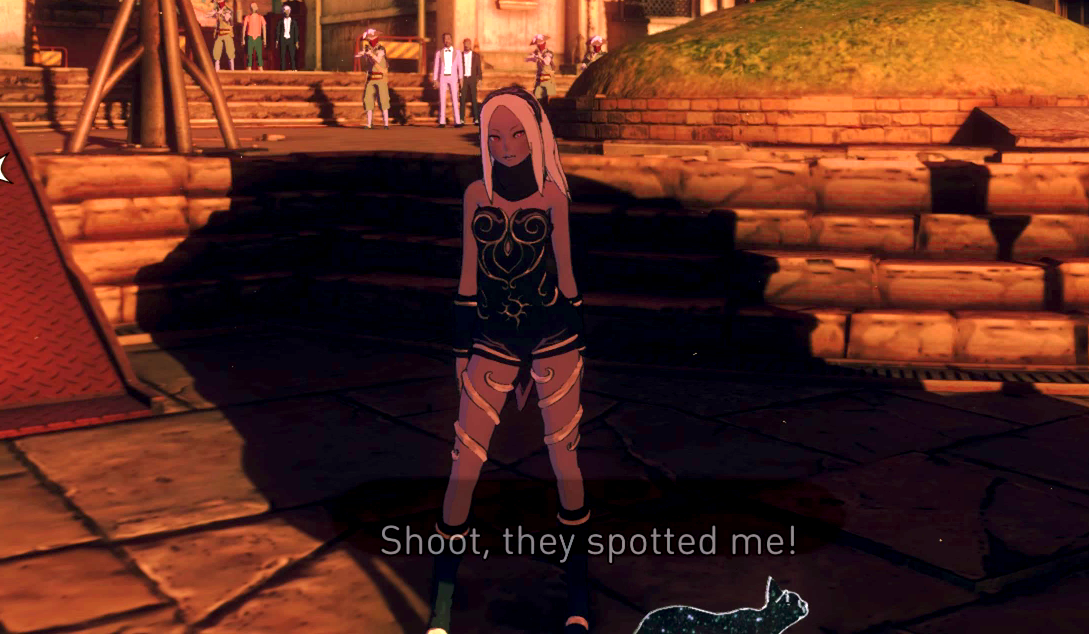
Get used to seeing this.
For missions at a time, Gravity Rush 2 becomes a stealth game with no stealth game tools. There’s no way to judge line of sight, no way to distract guards, no real way to take cover, and no recourse should you be spotted.
You just fail repeatedly until you discover the correct path. It’s awful. Midway through the game, a story mission introduces a new stealth system that involves luring and hacking patrol robots in order to reduce the number of guards you have to deal with. This is more interesting, but it only happens once. Baffling.
In addition to constantly repeating itself, Gravity Rush 2 stacks an impressive number of other frustrating or outmoded game design ideas on top of one another. There are missions that you can’t win for narrative reasons — bosses you’ll have to fight that can’t actually be defeated, and races where your opponents will cheat to beat you. There are timed missions that trigger instant failure if you miss a single enemy or objective.
There are those bosses that activate vortexes to suck you away from whatever you were doing, and bosses that blast out gusts of wind to send you careening into a wall. Checkpointing is inconsistent, and death can mean losing up to 10 or 15 minutes of hard-won progress. Bosses and other tough enemies will keep fighting even with empty health bars, killing you before you realise you needed to get in one more hit.
In fact, boss health bars become increasingly meaningless as the game progresses, and most of the bosses in the back half fully regenerate their health one or two times before they finally go down.
Missions repeatedly hobble Kat by removing or restricting her powers, which often robs the game of a sense of satisfying progression. I’d estimate that around half of the story and side missions forced me to navigate obstacles and fight waves of enemies with less than Kat’s full move-set. I did my best to level her up outside of story missions by collecting power-enhancing crystals and talismans, but the game was all too happy to periodically render that work meaningless.
Here, fight a difficult and fast-moving boss… while locked in slow-moving Jupiter Style! Enjoy!
Yet Gravity Rush 2 also proved adept at redeeming itself, usually just when I had reached my wit’s end. One early mission perfectly captured this hate/love whiplash: At the start I was told Kat needed to infiltrate a military base and take photos of a couple of key locations. I flew to the base and the game told me to be careful not to get spotted. My heart sank. Great, another fucking stealth mission.
I got the pictures I needed, and just as I had reached peak grumpiness, a mission objective sent me toward a couple of entertainers who were visiting the base for a gala event. A quick case of mistaken identity later, Kat was thrown into a red gown and pushed up on stage in front of a jazz band.
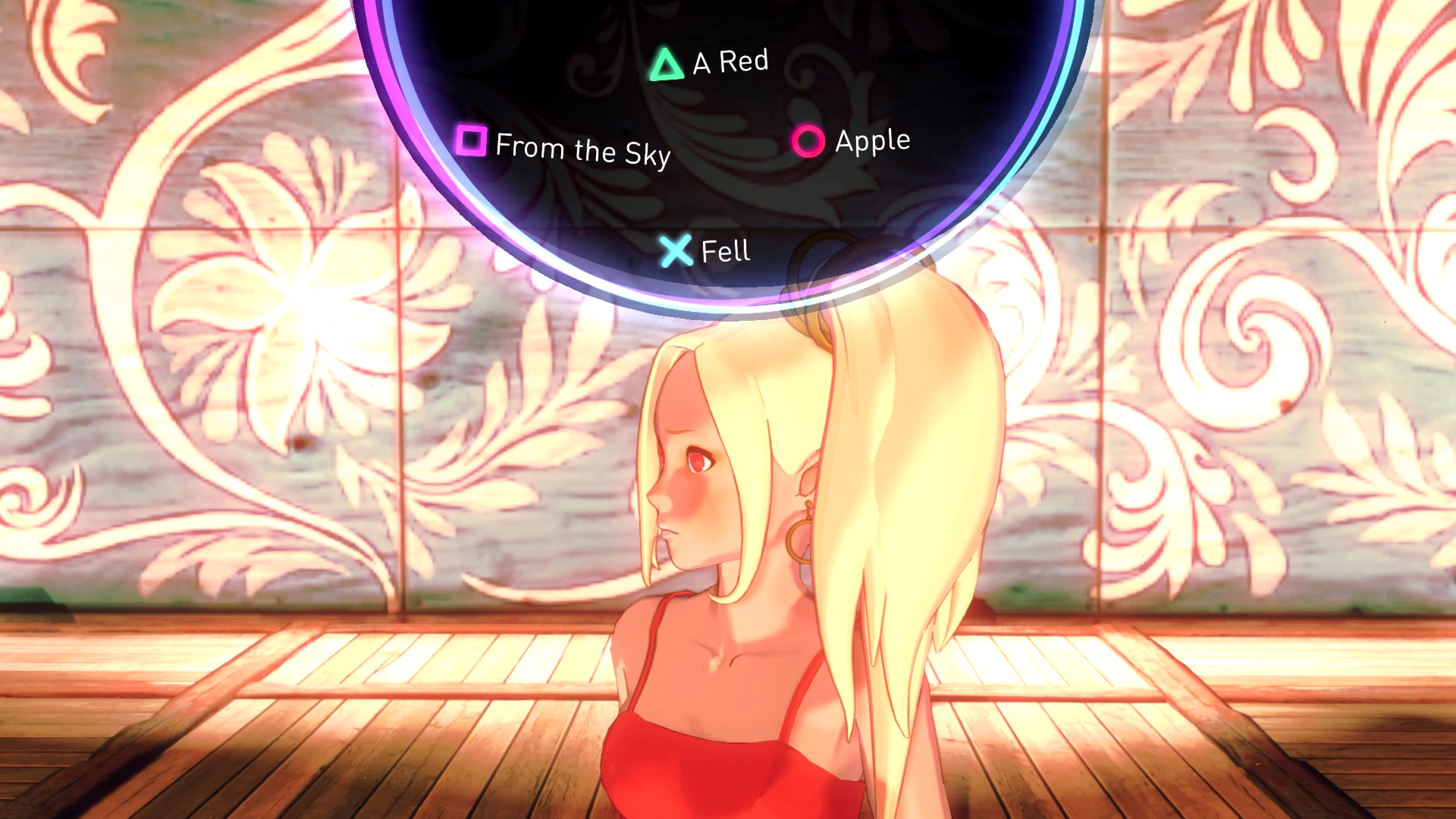
I chose the lyrics and Kat tentatively began to sing. “A red apple fell from the sky…” She was desperately riffing, and the band slowly picked up her melody and began to play along. It came together into a proper tune, and as she leaned into the second turnaround, my lingering frustration began to crack and fall away.
I can’t summon the necessary bile to truly dislike Gravity Rush 2, nor can I summon the necessary warmth to love it. In the aftermath of its grand finale I was exhausted in every way, happy to have gone on such an epic journey and just as happy that it was finally over. I left with an unexpected fondness for the characters to whom I bid farewell, and with a promise to return to the beautiful boulevards that I still want to explore.
That bittersweet parting was almost enough to make me forget the curses I cried in frustration, the sighs while staring at the ceiling in disbelief, the times I nearly quit out of anger. Almost, but not quite.
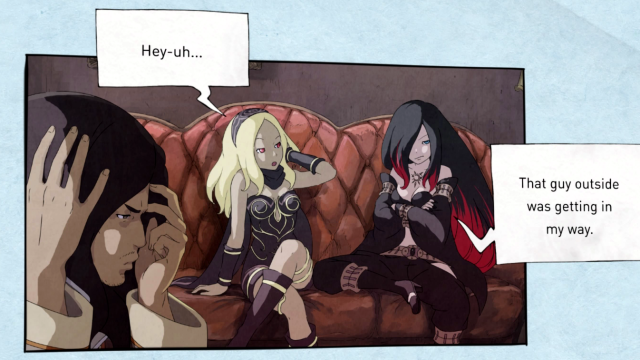
Comments
4 responses to “Gravity Rush 2: The Kotaku Review”
This looks like a Dreamcast game.
It looks like they’ve just stuck with the same engine/assets from the Vita version of the first game.
The first game definitely gave off a Dreamcast-ey vibe. Graphically and gameplay-wise. It’s an AA game in a AAA world.
Did you see the second gif? These sorts of art styles look much better in action
Wow, that was quite the roller-coaster of a review! My head is still spinning.
Reading through, most of the elements sound suspiciously like the first game. Jupiter and Lunar mode being the standout difference. I guess that’s not a bad thing, I really enjoyed the first. Seems like it may have been a missed opportunity, though. Anyway, I’ll be playing the game soon enough, so I’ll find out first-hand.